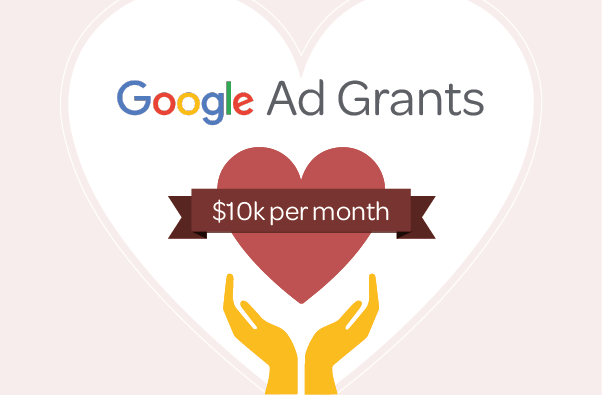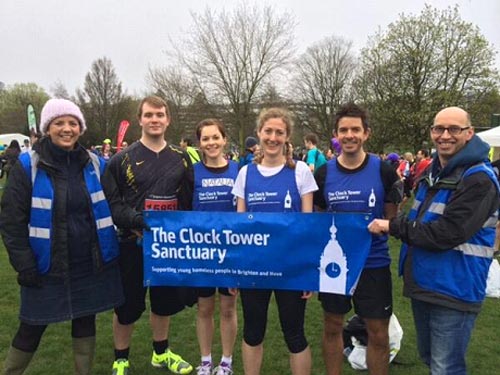Google Ad Grants offer non-profit organisations $10,000 of advertising spend per month to use on text ads on Google.com and its associated domains – that’s $120,000 of advertising spend per year.
This free advertising credit helps non-profit organisations big and small to raise awareness, mobilise supporters and fund donations. This means that smaller charities and non-profit organisations with smaller marketing budgets can still be visible online at no cost. If you are a non-profit organisation and eligible to receive Google’s grant, it is a no-brainer that you would apply for it and set up a Grants account.

It has been a while since we worked with a charity and since our work for Bloodwise, the Google Ad Grants policies have changed since our last blog post about Google Ad Grants. Unsurprisingly, if you are new to Google Ad Grants, then from just reading the Google Ad Grants activation guide you will not be aware that freedom existed for advertisers in the past. Google likes to wow advertisers with the capabilities of its service and give them the illusion of the many options it offers while in reality Google herds you down the path that it wants you to take. This blog aims to keep you up to date with how Google Ad Grants currently operates, which is important to ensure that once your account has been approved and activated by Google, it remains activated. Welcome to the herd!
You do not have the option of manual bidding
Previously, you had the option of manual bidding, which gives you full control over keyword bids as well as the option of choosing one of Google’s conversion-based bid strategies. Though manual bidding limited how high you could bid – no higher than $2.00 – it avoided incorrect learnings being taken by Google’s algorithms, which may not take into account all the factors that affect conversions that human management would consider, and therefore bid too high or too low at the wrong times. At ThoughtShift we have had a poor experience of using Google’s automated bid strategies: for example one account saw its daily budget being exhausted by late morning when it was set to Target CPA, even though it was set to standard delivery.
However, now we have no choice. Since April 2019, as stated unhelpfully on Google’s account management policy page but nowhere else, unless you are using Smart campaigns where Google helps you set up and run campaigns so that minimal effort is needed, you must “use either Maximize conversions, Maximize conversion values, Target CPA, or Target ROAS bidding.” While handing control over to Google means we don’t have to spend time adjusting bids, it means that we can no longer get as much visibility as possible for our keywords no matter their conversion rate.
There are more requirements to meet to keep your Google Ad Grants account activated
The original set of requirements as listed in Google’s Ad Grants Policy Compliance Guide were to:
- Have at least 2 ad groups and 2 keywords enabled per campaign.
- Not have enabled keywords with a strong buying intent, that are overly generic, or that are single word keywords.
- Not have enabled keywords with a quality score of 1 or 2.
- Have at least 2 unique sitelinks enabled in the account.
- Achieve a minimum account level CTR of 5% per month, though if you run Smart campaigns, Google foregoes this requirement.
In addition to these requirements, since you now must use one of Google’s conversion-based bid strategies, you must also receive at least 1 meaningful conversion per month. Google needs this information in order to manage bids effectively. Google’s Ad Grants Conversion Tracking Guide lists the conversion goals that Google considers to be meaningful:
- “Monetary actions, such as donations, purchases, ticket sales, membership fees.”
- “Non-monetary actions, such as email sign-ups, volunteer sign-ups, new membership form completions, information request submissions, calls to your organization, or time spent reading content on your website.”
Conversion goals that you can create but must assign it a category of ‘Other’ and exclude it from the Conversions report in Google Ads as they are not meaningful and should not be counted towards the 1 conversion monthly target:
- “Your homepage or a frequently visited webpage may not be used as the landing page for a Destination URL goal, as your number of conversions won’t reflect a significant difference to your clicks.”
While the minimum 1 conversion target per month makes it easier for us to keep our Google Ad Grants account activated, how can we be assured that the bid strategy is as well-informed as it could be, since Google only requires 1 conversion per month to inform its bids, which is surely too small an amount of data to go on? Google’s answer would probably be that they use a great many signals that they won’t bore us with so trust them, plus they are giving us free money, so be grateful.
You cannot upgrade to a Grantspro account
It used to be the case that if you managed the budget well and meet certain criteria, Google would upgrade you to the Grantspro account which offers $40,000 per month of free advertising spend instead of the standard $10,000. Google issued a statement in 2016 saying that “The Ad Grants team is no longer accepting Grantspro applications.” At the time there was hope among digital marketers that Google had merely suspended the Grantspro program, not discontinued it permanently; a suspension had happened before in 2013 but the Grantspro program had been reinstated in 2014.
But 3 years have passed and although Google’s Ad Grants How It Works page still has a bullet point on Grantspro, a Google employee in Google’s Community forum said in 2019 that there are “no plans to bring the program back.” While it may seem like Google wishes to give less free money to charities, it may in fact be the beginning of a fairer Google Ad Grants system, where charities that has less digital marketing expertise or time to dedicate to their Google Ad Grants account are not treated as inferior to charities that do manage their accounts well. There is no elite class of Google Grantspro charities and all charities are equal. And there’s no telling if Google will raise the $10,000 monthly allowance in the future, so watch this space.
While we can be optimistic about the future, remember that Google Ad Grants has stricter rules now. Don’t be caught out by them! We hope that you now know what is needed to keep your account activated and that, for now, you know not to expect anything further from Google beyond the $10,000 of monthly spend.
Follow my contributions to the blog to find out more about paid search, or get in touch for a free digital strategy consultation if you would like support with your Google Ad Grants application or set up.






